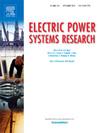电站外部金属水管过电压风险及防范措施
IF 3.3
3区 工程技术
Q2 ENGINEERING, ELECTRICAL & ELECTRONIC
引用次数: 0
摘要
电站外部金属水管易受电压转移的影响。虽然全球标准建议插入绝缘段,一些标准建议绝缘段长度为9-10米,但研究发现,这种措施在某些情况下会失败。本研究调查了电站外置金属水管的转移电压风险,并分析了在管道出站处插入绝缘段的有效性。通过调查,得出了输电电压的分布特征和设计预防措施时应考虑的关键因素。确定了典型地埋管所需保温段的长度。此外,还强调了在架空管道上插入绝缘段以控制触电危险的传统方法的局限性。本研究提出了通过使用管道对地绝缘或分段绝缘技术来管理架空管道上转移电压的解决方案。结果表明,随着土壤电阻率的增加,埋地金属管道所需的绝缘段长度(低电阻率条件下通常为10 m)减小。分段绝缘措施应用于架空管道时,可以将管道划分为几个等电位段,从而减小管道与地面之间的电位差,消除电压转移的危险。本文章由计算机程序翻译,如有差异,请以英文原文为准。
Risk and prevention measures for transferred voltage on external metal water pipes at power stations
External metal water pipes of power stations are subject to a high risk of transferred voltage. Although global standards recommend inserting insulating sections, and some standards recommend insulating sections lengths of 9–10 m, research has found that this measure will fail in some conditions. This study investigates the risk of transferred voltage on external metal water pipes at power stations and analyses the effectiveness of inserting insulating sections where the pipes exit the stations. Through this investigation, the distribution characteristics of transferred voltage and the key factors to consider in designing prevention measures are obtained. The required length of insulating sections for typical buried pipes is determined. Moreover, the limitations of the conventional method of inserting an insulating section on overhead pipes for controlling the risk of electric shock are highlighted. This study proposes solutions for managing transferred voltage on overhead pipes by using pipe-to-ground insulation or segmented insulation techniques. The results indicate that the length of an insulating section (usually >10 m under low-resistivity conditions) required for buried metal pipes decreases with an increase in soil resistivity. When applied to overhead pipes, segmented insulation measures can help divide the pipe into several equipotential sections, thereby reducing the potential difference between the pipe and the ground and eliminating the risk of transferred voltage.
求助全文
通过发布文献求助,成功后即可免费获取论文全文。
去求助
来源期刊

Electric Power Systems Research
工程技术-工程:电子与电气
CiteScore
7.50
自引率
17.90%
发文量
963
审稿时长
3.8 months
期刊介绍:
Electric Power Systems Research is an international medium for the publication of original papers concerned with the generation, transmission, distribution and utilization of electrical energy. The journal aims at presenting important results of work in this field, whether in the form of applied research, development of new procedures or components, orginal application of existing knowledge or new designapproaches. The scope of Electric Power Systems Research is broad, encompassing all aspects of electric power systems. The following list of topics is not intended to be exhaustive, but rather to indicate topics that fall within the journal purview.
• Generation techniques ranging from advances in conventional electromechanical methods, through nuclear power generation, to renewable energy generation.
• Transmission, spanning the broad area from UHV (ac and dc) to network operation and protection, line routing and design.
• Substation work: equipment design, protection and control systems.
• Distribution techniques, equipment development, and smart grids.
• The utilization area from energy efficiency to distributed load levelling techniques.
• Systems studies including control techniques, planning, optimization methods, stability, security assessment and insulation coordination.
 求助内容:
求助内容: 应助结果提醒方式:
应助结果提醒方式:


